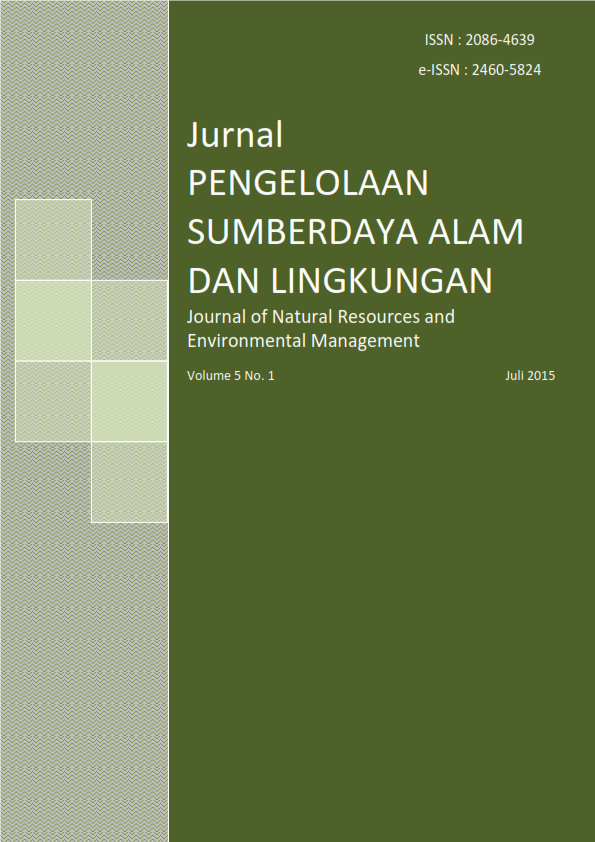IDENTIFIKASI TINGKAT KERAWANAN DEGRADASI KAWASAN HUTAN MANGROVE DESA MUARA, TANGERANG, BANTEN
Abstract
This study is intended to estimate the vulnerability of degradation of mangrove forest in Muara Village, Tangerang, Banten. There are five species of mangroves found in mangrove forest of Muara, which are: Avicennia alba, Avicennia officinnalis. Rhizophora apiculata, Rhizophora stylosa, and Rhizophora mucronata. The results showed that the mangrove forest in Muara has a high vulnerability of degradation based on the three vegetation characteristics, such as: density, domination, and biodiversity of mangrove species. The density of mangrove vegetation has only reached 739 individual/Ha. While the biodiversity of mangrove species is low and the domination level of mangrove species is high, in which the dominant species is Rhizophora mucronata. Mangrove rehabilitation activities are required by revegetation methods, and the mangrove species that are used in revegetation process are local species which available in the mangrove forest of Muara. Mangrove rehabilitation process that needs to be done is by revegetation of mangroves and mangrove species conservation. Mangrove species which is suitable for mangrove rehabilitation in Muara Village are Rhizophora mucronata and Avecinnea alba.
Keywords: mangrove, forest, degradation, rehabilitation
Authors
Authors who publish with this journal agree to the following terms:
- Authors retain copyright and grant the journal right of first publication with the work simultaneously licensed under a Creative Commons Attribution License that allows others to share the work with an acknowledgement of the work's authorship and initial publication in this journal.
- Authors are able to enter into separate, additional contractual arrangements for the non-exclusive distribution of the journal's published version of the work (e.g., post it to an institutional repository or publish it in a book), with an acknowledgement of its initial publication in this journal.
- Authors are permitted and encouraged to post their work online (e.g., in institutional repositories or on their website) prior to and during the submission process, as it can lead to productive exchanges, as well as earlier and greater citation of published work (See The Effect of Open Access).






